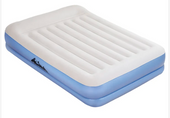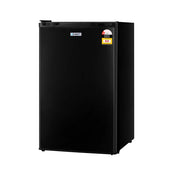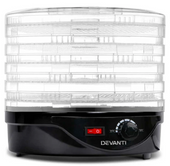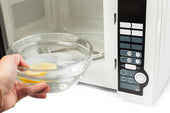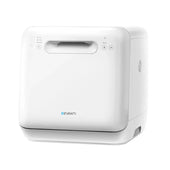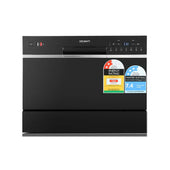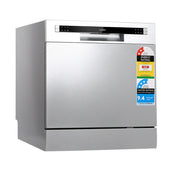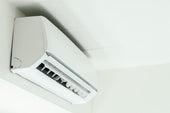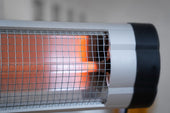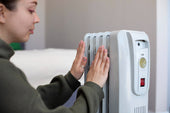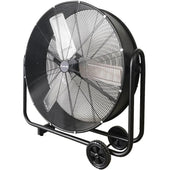Introduction: Why Sealing Your Kitchen Sink Matters
Sealing a kitchen sink is crucial to maintaining a functional and hygienic cooking space. A proper seal prevents water from seeping into the countertop, which can lead to issues such as mould growth, warping or rotting wood, and the weakening of structural integrity over time. It also helps to create a clean and professional finish, avoiding unsightly gaps where dirt and debris could accumulate. Additionally, a well-sealed sink safeguards against leaks that might damage surrounding cabinets or flooring. Whether you're working with a stainless steel kitchen sink or another type, sealing ensures a durable, water-resistant boundary that prolongs your kitchen’s longevity.
Necessary Tools and Materials for the Job
To properly seal a kitchen sink to the countertop, several essential tools and materials are needed to ensure a precise and lasting outcome:
Tools:
- Caulking Gun: Required to apply sealant evenly.
- Utility Knife: Used for removing old caulk and trimming excess material.
- Putty Knife: Assists in the removal of stubborn old caulk or debris.
- Masking Tape: Helps create clean seal lines and protect surrounding surfaces.
- Cleaning Cloths: Necessary for cleaning the sink and countertop.
- Gloves: Protect hands from sealant and debris.
Materials:
- Silicone Sealant: Provides a water-resistant and durable seal.
- Rubbing Alcohol or Cleaning Agent: Ensures all surfaces are clean.
- Sponge or Scrub Pad: For cleaning purposes.
Each item plays a vital role, ensuring a clean and professional finish.
Understanding Different Sealant Types: Silicone vs Caulk
When selecting a sealant for a kitchen sink, understanding the difference between silicone and caulk is essential. Silicone sealant is durable, flexible, and waterproof, making it ideal for areas exposed to moisture, such as kitchen sinks. It resists mould and mildew, ensuring long-term protection against water damage. However, it can be challenging to apply and may require specialised tools for a neat finish.
Caulk, on the other hand, is easier to apply and better suited for areas requiring a paintable surface. Although it is less resistant to moisture compared to silicone, certain types of caulk, like acrylic or latex caulk with added silicone, do offer moderate water resistance. Whether you’re working on a black kitchen sink or a traditional white porcelain one, transitioning between materials depends on the project’s specific requirements.
Preparing Your Workspace and Sink Area
To ensure a smooth sealing process, begin by organising the workspace around the sink area. At During Days, we recommend removing all items from the countertop near the sink, including appliances, decorations, and soap dispensers, to create ample room for manoeuvring. A clean and uncluttered area is essential for accuracy and efficiency.
Next, thoroughly clean the sink and surrounding countertop with a gentle cleaning solution. Ensure all grease, grime, and old sealant residues are removed. Wiping the area with a lint-free cloth will prevent dirt accumulation during sealing. This step is particularly important for larger installations like a double kitchen sink, which requires extra attention due to its extended surface contact.
Prepare necessary materials, such as silicone sealant, a caulking gun, masking tape, and a paper towel. Keeping tools organised and within reach minimises disruption while working.
Cleaning and Removing Old Sealant Effectively
Removing old sealant is a critical step before applying a new one. Begin by using a utility knife or a sealant remover tool to cut and scrape away the old sealant. Work cautiously to avoid scratching the sink or countertop surface. For stubborn residue, apply a sealant remover solution, allowing it to soften the material for easier removal.
After scraping, clean the area thoroughly with a mixture of warm water and mild dish soap. A scrub pad or soft cloth can remove any remaining residue. Dry the sink edges and countertop completely with a lint-free cloth to prepare the surface for resealing.
How to Apply Sealant: Step-by-Step Instructions
-
Clean the Area Remove any old sealant or debris around the sink and countertop edges. Clean the surface with a non-abrasive cleaner and ensure it is dry before proceeding.
-
Prepare the Sealant Cut the tip of the sealant tube at a 45-degree angle to create an opening. Place the tube into a caulking gun for controlled application.
-
Apply the Sealant Slowly squeeze the caulking gun, applying a continuous bead of sealant along the edge where the sink meets the countertop. Ensure consistent and even coverage, especially with installations like an undermount kitchen sink, where seamless adhesion is essential.
-
Smooth the Sealant Use a damp finger or a caulking tool to smooth the sealant bead for a neat finish. Wipe away any excess with a damp cloth.
-
Allow to Dry Let the sealant cure as per the manufacturer’s instructions, typically 24 to 48 hours, before using the sink.
Ensuring a Smooth and Even Seal
To achieve a watertight and professional seal, it is essential to focus on precision and uniformity during application. Begin by thoroughly cleaning the seam where the sink meets the countertop, removing any debris, grease, or old sealant. Use rubbing alcohol and a lint-free cloth for the best results. Allow the area to dry completely before proceeding.
When applying sealant, use a caulking gun for an even distribution. Hold the gun at a consistent angle and move steadily along the edge. After application, use a damp finger or a silicone smoothing tool to gently press and even out the sealant, ensuring no air gaps remain. This technique is just as effective whether you’re sealing a single bowl kitchen sink or a more complex installation.
Allowing Proper Drying and Finalising the Job
Once the sealant has been applied, it is essential to allow it to dry completely as per the manufacturer’s instructions. Usually, this takes between 24 and 48 hours depending on the type of sealant used. During this time, avoid using the sink or exposing the sealed area to any moisture.
After the sealant has fully cured:
- Inspect the seal: Check for any gaps or uneven spots and reapply if necessary.
- Clean the area: Remove any excess sealant using a utility knife or scraper, ensuring the edges are smooth and neat.
- Test the seal: Run water around the sink edge to confirm there are no leaks.
Troubleshooting Common Issues When Sealing a Sink
When sealing a sink to a countertop, various issues may arise. Identifying and addressing these efficiently ensures a secure and watertight seal.
Common Issues and Solutions
-
Uneven Sealant Application Uneven bead lines can cause gaps and water leakage. Use painter’s tape along the edges to create smooth, consistent lines, and apply sealant with a steady hand.
-
Sealant Not Adhering Dirt or residue may prevent adhesion. Clean the sink rim and countertop thoroughly with rubbing alcohol before applying sealant.
-
Sealant Drying Too Quickly Drying delays or premature curing can occur in extreme temperatures. Work in a temperature-controlled environment and use the appropriate type of sealant for the climate.
-
Residue Build-Up After Sealing If sealant creates residue on surfaces, gently scrape it using a plastic tool to avoid scratching. Follow up with a mild cleaner to remove excess residue.
These strategies effectively mitigate problems while enhancing sink durability.
Maintenance Tips for a Long-Lasting Seal
- Regular Cleaning: Clean the sealed area with non-abrasive cleaners to prevent residue build-up. Avoid harsh chemicals that can weaken the seal over time.
- Inspect Frequently: Regularly check for any cracks, peeling, or discoloration in the sealant. Early detection can help address minor issues before they escalate.
- Avoid Excess Moisture: Wipe away standing water or spills around the sink to minimise moisture exposure that could compromise the seal.
- Reapply Sealant When Needed: If the seal starts to deteriorate, remove old caulk before reapplying a fresh layer to maintain its integrity and appearance.
- Protect Against Heat: Avoid placing hot pots or pans near the seal to prevent potential damage due to temperature changes.










